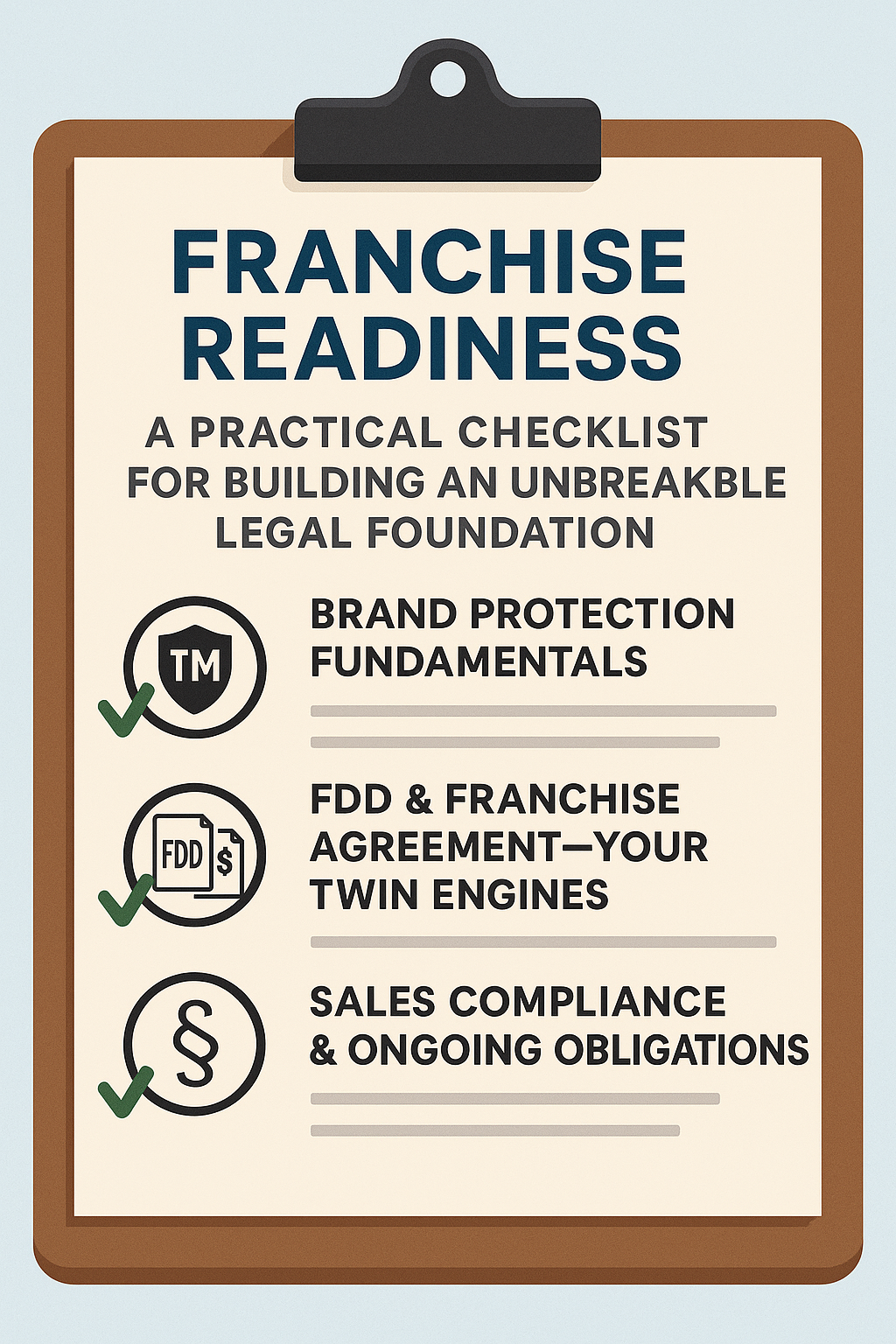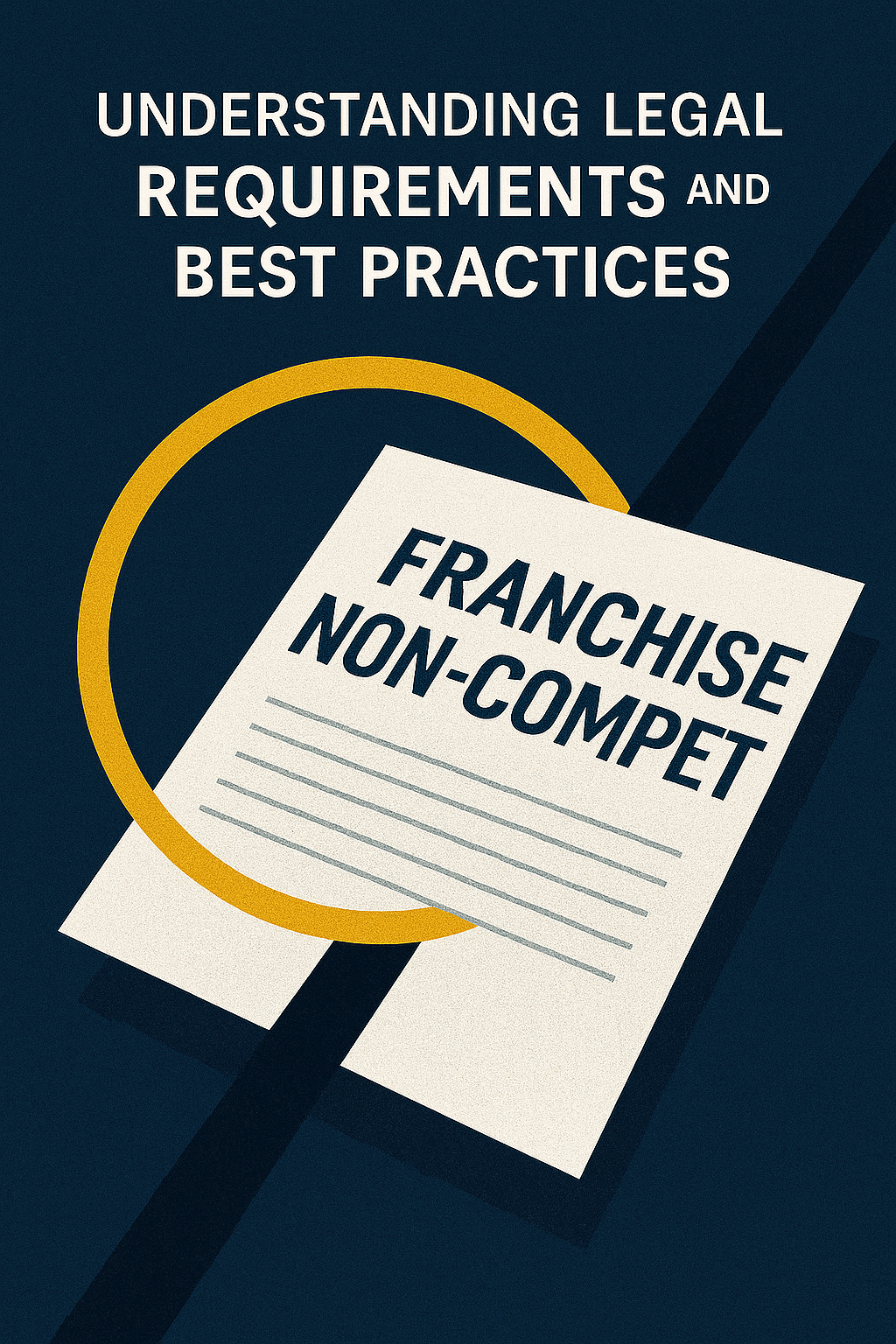Franchise agreements are essential documents that outline the legal and operational relationship between franchisors and franchisees. As brands evolve and adapt to changing market conditions, it becomes crucial to update franchise agreements to reflect these changes accurately. This article will explore the importance of updating franchise agreements, key factors to consider during the update process, and how to effectively communicate with franchisees during this transition.
Understanding the Importance of Updating Your Franchise Agreement
Keeping your franchise agreement up to date is vital to ensure the continued success and growth of your brand. As your business evolves, your franchise agreement must align with the new policies, guidelines, and operational standards necessary to maintain brand consistency and quality. Failing to update the agreement properly can lead to legal disputes and operational inefficiencies, which can harm both franchisors and franchisees.
Moreover, an updated franchise agreement allows you to incorporate changes related to intellectual property rights, marketing and advertising guidelines, financial obligations, and other important aspects of your business. These updates protect the brand’s integrity and provide clarity to both franchisors and franchisees, fostering a more collaborative and successful working relationship.
Key Factors to Consider When Updating Your Franchise Agreement
When updating your franchise agreement, it is crucial to consider several key factors to ensure a seamless transition and minimize disruptions:
1. Alignment with Brand Guidelines: Evaluate if the current franchise agreement sufficiently aligns with your brand’s evolving guidelines and standards. Assess whether any changes or updates are necessary to reflect the desired brand image and customer experience.
2. Legal Compliance: Review the agreement with legal counsel to ensure that all changes comply with local, regional, and federal regulations. This step will safeguard your brand’s legal standing and protect both franchisors and franchisees from potential litigation.
3. Franchisee Input: Seek input from current franchisees to understand their perspectives and concerns regarding the proposed updates. By involving franchisees in the update process, you can foster a sense of ownership and build stronger relationships based on mutual trust and collaboration.
4. Timetable and Implementation Plan: Create a clear timetable and implementation plan to carry out the updates efficiently. This allows franchisees adequate time to become familiar with the changes and make necessary adjustments to their operations.
By keeping these factors in mind, you can ensure a smooth and effective update process that benefits both franchisors and franchisees.
Identifying the Need for an Updated Franchise Agreement
Recognizing when your franchise agreement requires an update is crucial to avoid potential conflicts and operational challenges. Consider these indicators that may signal the need for an updated franchise agreement:
1. Outdated Operational Guidelines: If your franchise agreement doesn’t reflect current operational practices or fails to address emerging industry trends and customer demands, it may be time to update.
2. Brand Evolution: As your brand evolves, aspects such as brand identity, marketing strategies, and customer experiences change accordingly. These changes necessitate respective updates to your franchise agreement to ensure consistency across all franchise locations.
3. Intellectual Property Protection: If there have been updates to intellectual property rights, trademarks, copyrights, or patents that affect your franchise, it is crucial to reflect these changes in the agreement to maintain legal protection.
By proactively identifying the need for an updated franchise agreement, you can stay ahead of potential challenges and maintain a strong foundation for your franchise system.
Conducting a Comprehensive Review of Your Franchise Agreement
Before proceeding with any updates, it is essential to conduct a comprehensive review of your existing franchise agreement. This review should encompass various aspects, including:
1. Legal Compliance: Ensure that the existing agreement complies with relevant local, regional, and federal laws and regulations. This review helps identify any discrepancies or gaps that may need to be addressed in the updated agreement.
2. Operational Clarity: Assess the clarity and specificity of the current agreement’s operational guidelines. Make revisions to provide additional clarity and address potential ambiguities that may lead to misunderstandings or conflicts.
3. Flexibility and Adaptability: Evaluate how well the existing agreement allows for necessary modifications as your brand continues to evolve. This review ensures that the updated agreement can accommodate future changes without requiring frequent revisions.
By conducting a comprehensive review, you can identify areas that require updates and lay the groundwork for a robust and effective franchise agreement.
Incorporating Brand Evolution into Your Franchise Agreement
As brands evolve, it is essential to incorporate these changes into your franchise agreement to maintain consistency and ensure all franchisees uphold the brand’s values and standards. To effectively incorporate brand evolution into the agreement:
1. Revise Brand Guidelines: Update the agreement to reflect any changes in brand guidelines, including brand identity, logo usage, design standards, and customer experience expectations.
2. Define Product and Service Standards: Clearly outline any updates to product offerings, quality control measures, and service standards expected from franchisees. This ensures a uniform experience for customers across all franchise locations.
3. Communicate Marketing Strategies: Incorporate any changes in marketing strategies or promotional activities into the agreement. Highlight the importance of franchisee participation and adherence to these strategies for effective brand promotion.
4. Address New Technologies: Consider the integration of new technologies that may impact franchise operations. Ensure the agreement provides flexibility for utilizing and adopting emerging technologies while maintaining brand consistency.
By integrating brand evolution into your franchise agreement, you establish a solid framework that aligns franchisees with the brand’s direction and ensures uniformity across all locations.
Adapting Your Franchise Agreement to Align with Changing Brand Guidelines
As your brand guidelines change, it is essential to adapt your franchise agreement to reflect these updates accurately. Consider the following steps when aligning your agreement with changing brand guidelines:
1. Update Brand Identity: Incorporate any changes in brand identity, including logos, color schemes, and key messaging. Provide clear instructions on how franchisees should implement these changes in their marketing materials and physical locations.
2. Modify Design Standards: Revise design standards, interior layouts, and signage requirements to align with new brand guidelines. Specify any necessary rebranding or renovation expectations for franchisees.
3. Update Brand Messaging: Clearly communicate any changes in brand messaging or the brand’s voice. This ensures consistent communication across all franchise locations and reinforces the brand’s core values.
4. Revisit Employee Training: Consider any modifications to employee training programs to align with updated brand guidelines. Develop training materials that cover new procedures and emphasize the importance of adhering to the brand’s evolving principles.
By adapting your franchise agreement to align with changing brand guidelines, you establish a cohesive brand identity and maintain a consistent customer experience across all franchise locations.
Ensuring Consistency and Uniformity Across Franchise Locations in the Updated Agreement
An updated franchise agreement should ensure consistency and uniformity across all franchise locations. Consider the following strategies to achieve this:
1. Standardize Operating Procedures: Incorporate standardized operating procedures into the updated agreement. This ensures that franchisees follow consistent protocols, leading to a consistent customer experience across all locations.
2. Implement Quality Control Measures: Introduce quality control measures to maintain consistent product and service standards. These measures could include regular inspections, customer feedback systems, and ongoing training programs.
3. Establish Communication Channels: Set up communication channels, such as regular newsletters, online platforms, or franchisee conferences, to facilitate the sharing of best practices and updates. This strengthens the sense of community and fosters collaboration among franchisees.
4. Conduct Performance Evaluations: Introduce regular performance evaluations to assess franchisees’ compliance with the updated agreement. Use these evaluations as opportunities to identify areas for improvement and provide support where needed.
By ensuring consistency and uniformity across franchise locations, you create a cohesive brand experience that resonates with customers and strengthens your overall franchise system.
Addressing Intellectual Property Rights in the Updated Franchise Agreement
Intellectual property rights play a crucial role in protecting your brand’s identity, proprietary information, and creative assets. When updating your franchise agreement, consider the following guidelines regarding intellectual property rights:
1. Define Intellectual Property: Clearly define the intellectual property owned by the franchisor, including trademarks, logos, copyrights, and trade secrets. Specify how franchisees can use this intellectual property within the bounds of the franchise agreement.
2. Outline Usage Guidelines: Provide specific guidelines on how franchisees can use the franchisor’s intellectual property in their marketing materials, signage, and online presence. Ensure the agreement safeguards the franchisor’s intellectual property while allowing franchisees to leverage the brand’s recognition.
3. Address Infringement Concerns: Clearly explain the consequences of intellectual property infringement by franchisees. Establish procedures for handling any potential violations and outline the steps for resolving such issues to protect the brand’s integrity.
4. Disclose Proprietary Information: Specify any proprietary information that franchisees must protect and maintain confidentiality on, such as customer lists, marketing strategies, or operational procedures. This protects valuable business strategies and maintains a competitive edge.
By addressing intellectual property rights in the updated franchise agreement, you safeguard your brand’s unique assets and ensure franchisees understand their responsibilities related to these rights.
Updating Terms and Conditions in the Franchise Agreement to Reflect Brand Evolution
As your brand evolves, it becomes necessary to update the terms and conditions of your franchise agreement. Here are some important considerations when updating these terms and conditions:
1. Renewal and Termination: Review the renewal and termination clauses to ensure they reflect your brand’s current goals and operational requirements. Consider any changes in the agreement’s duration, renewal fees, or termination procedures.
2. Royalty and Fee Structure: Assess the royalty and fee structure to ensure it remains competitive within the industry while covering the costs of ongoing support and system enhancements. Balance the financial interests of both franchisors and franchisees.
3. Non-Compete and Non-Disclosure Agreements: Review and update non-compete and non-disclosure clauses to protect the franchisor’s business interests and maintain the confidentiality of proprietary information.
4. Transfer and Sale of Franchise: Consider any changes in the terms and conditions related to franchise transfers or sales. Clearly define the process, requirements, and limitations for franchisees who wish to transfer their ownership or sell their franchise location.
By updating the terms and conditions in the franchise agreement to reflect brand evolution, you ensure that all parties involved have a clear understanding of their rights and obligations within the franchise system.
Updating Marketing and Advertising Guidelines in the Revised Franchise Agreement
Marketing and advertising are crucial elements in promoting and maintaining a consistent brand image across all franchise locations. When updating your franchise agreement, pay special attention to marketing and advertising guidelines:
1. Branding and Logo Usage: Clearly outline the approved use of logos, slogans, color schemes, and other branding elements in marketing materials and advertising campaigns. Ensure that franchisees adhere to these guidelines to maintain a consistent brand identity.
2. Digital Marketing: Incorporate guidelines for digital marketing, such as website design, social media usage, and online advertising. Emphasize the importance of brand consistency and online reputation management for franchisees.
3. Local Marketing Initiatives: Encourage franchisees to engage in local marketing initiatives while maintaining brand standards. Establish clear procedures for pre-approving local advertising campaigns or promotions to ensure they align with the brand’s image and values.
4. Co-op Advertising: Discuss co-operative advertising funds and participation requirements in the updated agreement. Clearly outline how the franchisor’s marketing resources and funds will support franchisees’ advertising efforts to maximize brand exposure and customer engagement.
By updating the marketing and advertising guidelines in the revised franchise agreement, you empower franchisees to effectively promote the brand while maintaining consistency and protecting the brand’s reputation.
Assessing Financial Obligations in the Updated Franchise Agreement
Financial obligations are a vital aspect of any franchise agreement. When updating your agreement, consider the following aspects related to financial obligations:
1. Initial Franchise Fee: Review and update the initial franchise fee to accurately reflect the value provided to franchisees, the costs associated with onboarding, training, and initial support, and market conditions.
2. Ongoing Royalties and Fees: Assess the ongoing royalty and fee structure to ensure it adequately covers the costs of supporting franchisees and sustaining the franchise system. Consider any changes required to maintain the franchisor’s profitability and provide value to franchisees.
3. Advertising Contributions: Clearly outline franchisees’ obligations regarding advertising contributions and expenses. Specify how these funds will be used to support local and national marketing initiatives that benefit all franchisees.
4. Financial Performance Reporting: Establish reporting requirements for franchisees to provide regular financial performance updates. This enables the franchisor to track the financial health of each location and offer support where needed.
By assessing financial obligations in the updated franchise agreement, you ensure transparency, fairness, and the long-term financial viability for both franchisors and franchisees.
Communicating Changes Effectively with Franchisees During the Update Process
Effective communication plays a vital role in managing the update process and maintaining a positive relationship with franchisees. Consider the following strategies to communicate changes effectively:






